| View previous topic :: View next topic |
| Author |
Message |
bernhardas

Joined: 01 Jan 2013
Posts: 1432
Expire: 2017-05-23
|
 Posted: Sun Jul 06, 2014 5:46 pm Post subject: Sensor stack thickness conclusion Posted: Sun Jul 06, 2014 5:46 pm Post subject: Sensor stack thickness conclusion |
 |
|
bernhardas wrote:
http://www.lensrentals.com/blog/2014/07/sensor-stack-thickness-part-iii-the-summary
the conclusion of the observed results, when does it matter when not.
Posted today |
|
| Back to top |
|
 |
RnR


Joined: 11 Jul 2012
Posts: 283
Location: Brisbane, Australia
Expire: 2019-08-29
|
 Posted: Mon Jul 07, 2014 11:09 am Post subject: Posted: Mon Jul 07, 2014 11:09 am Post subject: |
 |
|
RnR wrote:
Thanks for the headsup! Poor m43 owners 
_________________
Currently shooting with Fuji X-E2s + Metabones Speedbooster + m42 and CY glass 💕
Cheers, Hasse |
|
| Back to top |
|
 |
norland


Joined: 10 Aug 2013
Posts: 165
|
 Posted: Mon Jul 07, 2014 1:18 pm Post subject: Posted: Mon Jul 07, 2014 1:18 pm Post subject: |
 |
|
norland wrote:
I'm confused ....
Particularly over the implication for manual lenses from 35mm days teamed with M4/3 or crop-sensor cameras....
We see good -- or excellent -- image results from people using camera/lens combinations which (seemingly) in theory should be poor.
Why? |
|
| Back to top |
|
 |
bernhardas

Joined: 01 Jan 2013
Posts: 1432
Expire: 2017-05-23
|
 Posted: Mon Jul 07, 2014 1:38 pm Post subject: Posted: Mon Jul 07, 2014 1:38 pm Post subject: |
 |
|
bernhardas wrote:
The way I read it, the results are good when either the lens has a large distance to exit pupil ( SLR and medium format lenses to clear the mirror) and/or a smaller aperture. For example anything above 3.5 should be safe.
p.s the lenses from systems with larger mirror clearance (for a better word) should do better. |
|
| Back to top |
|
 |
drjs


Joined: 25 Feb 2013
Posts: 484
Location: USA
|
 Posted: Mon Jul 07, 2014 2:22 pm Post subject: Posted: Mon Jul 07, 2014 2:22 pm Post subject: |
 |
|
drjs wrote:
| norland wrote: |
I'm confused ....
Particularly over the implication for manual lenses from 35mm days teamed with M4/3 or crop-sensor cameras....
We see good -- or excellent -- image results from people using camera/lens combinations which (seemingly) in theory should be poor.
Why? |
I think it is all a matter of respective. In the world where 24/36 megapixel images are re-sized to 1024x768 and posted to a website at 72ppi. Bad is good, good is excellent, and excellent is spectacular. 
    
_________________
Follow me on 500px |
|
| Back to top |
|
 |
Gerald


Joined: 25 Mar 2014
Posts: 1196
Location: Brazil
|
 Posted: Mon Jul 07, 2014 6:17 pm Post subject: Posted: Mon Jul 07, 2014 6:17 pm Post subject: |
 |
|
Gerald wrote:
Roger Cicala is a master at raising problems that exist in theory but in practice are unimportant. He already did that when he discussed the "problems" with adapters. Now he does the same with what he calls "sensor stack", which is just is the stack of the anti-aliasing low-pass filter and anti-IR filter.
A few comments on Roger Cicala's articles:
1. The measurements were made for 40 lp/mm, which represents extremely fine image details, especially in a FF sensor. For 30 lp/mm or 20 lp/mm, for example, the effect of the sensor stack would be much less.
2. Drops of 10% or 20% in MTF are visually imperceptible, especially when they occur in extremely fine details of image.
3. Drops in MTF as large as 50% can be easily corrected with post-processing (sharpening).
4. The effect of sensor stack thickness variation is negligible for F2.8 or smaller apertures.
5. Sensor stack thickness can have an effect on the image corner for F1.4 or faster lenses. However, these lenses have inherently low response at 40 lp/mm.
I can see a situation where the thickness of the sensor stack would have some importance. It is when the following conditions occur simultaneously:
a) M43 camera (sensor stack thickness = 4mm).
b) ultra wide-angle non-retrofocus lens with aperture F1.4 or larger.
These conditions happen, for example, when someone tries to use a ultra wide-angle Leica lens on a M43 camera, what certainly is not a very smart thing to do. The M43 system already has many excellent modern lenses, so in my opinion, using na extremely expensive Leica lens on a M43 camera does not make any sense.
One thing Roger Cicala does not discuss in the article is: Why M43 cameras use sensor stack as thick as 4mm?
To be fair, I've never seen anyone commenting on this, but I suspect that the thickness of 4mm was chosen because it makes virtually invisible the dust particles that inevitably accumulate on the surface of the sensor stack. For a thickness of 4mm, dust would be visible only when apertures of F22 or smaller were used. However, the lens in a M43 camera is hardly closed down beyond F11 to not suffer the effect of diffraction. Yes, the people who have set the standard M43 knew what they were doing.
_________________
If raindrops were perfect lenses, the rainbow did not exist. |
|
| Back to top |
|
 |
bernhardas

Joined: 01 Jan 2013
Posts: 1432
Expire: 2017-05-23
|
 Posted: Tue Jul 08, 2014 4:35 am Post subject: Posted: Tue Jul 08, 2014 4:35 am Post subject: |
 |
|
bernhardas wrote:
| Gerald wrote: |
Roger Cicala is a master at raising problems that exist in theory but in practice are unimportant.
I can see a situation where the thickness of the sensor stack would have some importance. It is when the following conditions occur simultaneously:
a) M43 camera (sensor stack thickness = 4mm).
b) ultra wide-angle non-retrofocus lens with aperture F1.4 or larger.
These conditions happen, for example, when someone tries to use a ultra wide-angle Leica lens on a M43 camera, what certainly is not a very smart thing to do. |
I agree that the relevance might be greatest for owners of ultra wide Rangefinder lenses. For them it might be important?
If someone posts example pictures of a very rare lens, the relevance is equally limited to the select group of few owners. And I am fine with it. Isn't it normal in a specialty forum that postings refer to items or circumstances that are not mass market?
I fully and utterly disagree that using a lens you own on a camera you own even if it is not the original system would be "not a very smart thing to do".
Isn't that what most of the users of this forum do every day?
Isn't that what the forum is about?
And why should that specific combination be different from any other?
Your words "not a very smart thing to do" could also be interpreted as to mean "does not work very well". Yes Roger has provided some explanations as to the reasons, done some measurements and created a database where we will be able to look up what does work better and what does not work well. Your posting gives the impression that you have an issue with that, and I simply lack the comprehension to understand why? |
|
| Back to top |
|
 |
memetph

Joined: 01 Dec 2013
Posts: 940
Location: Poland
|
 Posted: Tue Jul 08, 2014 5:20 am Post subject: Posted: Tue Jul 08, 2014 5:20 am Post subject: |
 |
|
memetph wrote:
Some fast micro 4/3 lenses have very good performances at full aperture.
Do they have really a long exit pupil distance ?
If not why do they work so well with those sensors ?
I don't have the knowledge to understand deeply and to contradict this article but I find it not convincing to the end. |
|
| Back to top |
|
 |
RnR


Joined: 11 Jul 2012
Posts: 283
Location: Brisbane, Australia
Expire: 2019-08-29
|
 Posted: Tue Jul 08, 2014 8:23 am Post subject: Posted: Tue Jul 08, 2014 8:23 am Post subject: |
 |
|
RnR wrote:
| memetph wrote: |
Some fast micro 4/3 lenses have very good performances at full aperture.
Do they have really a long exit pupil distance ?
If not why do they work so well with those sensors ? |
Because they (assuming you mean native m43 glass) would have been designed with the 4mm sensor stack in mind. Potential IQ problems can occur when film era lenses suddenly gets a 4mm piece of glass into their optical path.
_________________
Currently shooting with Fuji X-E2s + Metabones Speedbooster + m42 and CY glass 💕
Cheers, Hasse |
|
| Back to top |
|
 |
Gerald


Joined: 25 Mar 2014
Posts: 1196
Location: Brazil
|
 Posted: Tue Jul 08, 2014 4:36 pm Post subject: Posted: Tue Jul 08, 2014 4:36 pm Post subject: |
 |
|
Gerald wrote:
| bernhardas wrote: |
| I fully and utterly disagree that using a lens you own on a camera you own even if it is not the original system would be "not a very smart thing to do". |
Please do not think I am against mix-and-match lenses and cameras in general. Quite the contrary, I believe that many adaptations are interesting, but we must also realize that some are not recommended. An example of a good adaptation is to use an old quality lens quality on a modern digital camera. On the other hand, using a modern lens on an obsolete digital camera is not a good idea. I also don't understand the fever of adapting old crap lenses on a digital camera with the hope of finding a gem.
In particular, I don't think that adapting a modern, fast and ultra wide-angle Leica lens to a camera in M43 is a good idea. The Leica M lenses are made for the FF format so the M43 sensor will "see" only the center of the field. This kind of adaptation is certainly a huge waste of optical resource. If a Leica lens would cost $100, all right, but a Summilux 21mm F1.4 ASPH cost over $7,000! On an M43 camera, the Summilux would function not as an ultra wide-angle lens but as a normal lens. If a person can afford $7000 on a lens, he/she certainly can buy a Panasonic 25mm F1.4, which costs "only" $800 and was designed especially for the M43 format. I am pretty sure the Panasonic 25mm F1.4 would perform much better on a M43 camera than the adapted Summilux 21mm F1.4.
_________________
If raindrops were perfect lenses, the rainbow did not exist. |
|
| Back to top |
|
 |
Nordentro


Joined: 24 Jun 2010
Posts: 4713
Location: Lillehammer, Norway
Expire: 2015-01-29
|
 Posted: Tue Jul 08, 2014 5:11 pm Post subject: Posted: Tue Jul 08, 2014 5:11 pm Post subject: |
 |
|
Nordentro wrote:
Well, some of my classic RF lenses like Nikkor 2.5cm m39, Canon 25mm m39 and FED 28mm m39 works better with OM-D than A7R. The whole picture is much more complex than just sensor thickness. 
_________________
Lars | Manuellfokus.no |
|
| Back to top |
|
 |
eno789

Joined: 27 Aug 2010
Posts: 159
Location: California
|
 Posted: Tue Jul 08, 2014 6:15 pm Post subject: Posted: Tue Jul 08, 2014 6:15 pm Post subject: |
 |
|
eno789 wrote:
Based on this conclusion, the performance of Nikon lenses originally designed for film SLR will also suffer somewhat on DSLR.
IMHO it's good these issues are raised, studied. But it's probably not that important in practice except in extreme cases.
_________________
Sharpness from lenses; Softness from me.
Nikon DSLR, Sony Mirrorless, Panasonic mu-4/3 - Having fun with MF lenses
https://www.flickr.com/groups/painterly_bokeh |
|
| Back to top |
|
 |
Gerald


Joined: 25 Mar 2014
Posts: 1196
Location: Brazil
|
 Posted: Wed Jul 09, 2014 12:05 am Post subject: Posted: Wed Jul 09, 2014 12:05 am Post subject: |
 |
|
Gerald wrote:
| Nordentro wrote: |
Well, some of my classic RF lenses like Nikkor 2.5cm m39, Canon 25mm m39 and FED 28mm m39 works better with OM-D than A7R. The whole picture is much more complex than just sensor thickness.  |
You're talking about slow rangefinder lenses with aperture F3.5 or F4, for which the thickness of the sensor stack is not very important. When those lenses are used on the Olympus OM-D, the aberrations in the corners are automatically cropped out by the small sensor. On the Sony A7R, which uses a FF sensor, the aberrations in the corners appear in their full glory.
_________________
If raindrops were perfect lenses, the rainbow did not exist. |
|
| Back to top |
|
 |
Nordentro


Joined: 24 Jun 2010
Posts: 4713
Location: Lillehammer, Norway
Expire: 2015-01-29
|
 Posted: Wed Jul 09, 2014 12:56 am Post subject: Posted: Wed Jul 09, 2014 12:56 am Post subject: |
 |
|
Nordentro wrote:
True, I did not read the article properly 
So this isn`t really a big problem after all if it just boil down to very fast ultra wide angle lenses with short register distance?!?
_________________
Lars | Manuellfokus.no |
|
| Back to top |
|
 |
memetph

Joined: 01 Dec 2013
Posts: 940
Location: Poland
|
 Posted: Wed Jul 09, 2014 4:53 am Post subject: Posted: Wed Jul 09, 2014 4:53 am Post subject: |
 |
|
memetph wrote:
| RnR wrote: |
| memetph wrote: |
Some fast micro 4/3 lenses have very good performances at full aperture.
Do they have really a long exit pupil distance ?
If not why do they work so well with those sensors ? |
Because they (assuming you mean native m43 glass) would have been designed with the 4mm sensor stack in mind. Potential IQ problems can occur when film era lenses suddenly gets a 4mm piece of glass into their optical path. |
Of course. That is why the article is not convincing to the end .
I just remembered thet the short and standard lenses of micro 4/3 produce high levels of distortion and that without the software correction their results are not good at all . That is the contrary what I wrote, there are actually opticaly very bad. Only telelenses are "ckean".
Is this related to the thick sensor stack? |
|
| Back to top |
|
 |
Gerald


Joined: 25 Mar 2014
Posts: 1196
Location: Brazil
|
 Posted: Wed Jul 09, 2014 2:28 pm Post subject: Posted: Wed Jul 09, 2014 2:28 pm Post subject: |
 |
|
Gerald wrote:
| memetph wrote: |
I just remembered thet the short and standard lenses of micro 4/3 produce high levels of distortion and that without the software correction their results are not good at all . That is the contrary what I wrote, there are actually opticaly very bad. Only telelenses are "ckean".
Is this related to the thick sensor stack? |
No, the distortion correction by software has nothing to do with the thickness of the sensor stack. Incidentally, this type of correction is also used in Hasselblad lenses.
The lenses for the M43 system are not "optically very bad." Quite the contrary, they are generally excellent. The lenses for M43 are optically corrected for distortion, but only partially. The residual distortion is eliminated by software, practically without negative side effects. The final distortion is virtually zero.
To try to correct completely the distortion by optical means is near impossible. Most Canon, Nikon and Leica lenses have distortion between 1% and 2%, while the M43 lenses from Panasonic have final distortion after correction by software below 1%.
_________________
If raindrops were perfect lenses, the rainbow did not exist. |
|
| Back to top |
|
 |
memetph

Joined: 01 Dec 2013
Posts: 940
Location: Poland
|
 Posted: Wed Jul 09, 2014 9:46 pm Post subject: Posted: Wed Jul 09, 2014 9:46 pm Post subject: |
 |
|
memetph wrote:
The level of distortion of those lenses is higher than the usual 1%. It is more between 4 and 6%.
Such levels of correction cannot be without consequences . Optically this performance is simply bad.
I advise you to watch how a non corrected image from those lenses looks like and you will be impressed.
About the thad thickness, if you are sure that it is has no influence on this bad quality on the borders of those lenses, that is fine.
But the results are here . They are bad out of the sensor. With 4 ,5 or 6 % of distortion can we speak about the sharpness of those lenses.
PS: I have nothing against micro4/3 . I own two Panas. |
|
| Back to top |
|
 |
Gerald


Joined: 25 Mar 2014
Posts: 1196
Location: Brazil
|
 Posted: Wed Jul 09, 2014 11:32 pm Post subject: Posted: Wed Jul 09, 2014 11:32 pm Post subject: |
 |
|
Gerald wrote:
| memetph wrote: |
| The level of distortion of those lenses is higher than the usual 1%. It is more between 4 and 6%. |
I said the Panasonic M43 lenses have distortion below 1% after software correction. Of course, before correction the distortion is considerably higher.
| memetph wrote: |
| With 4 ,5 or 6 % of distortion can we speak about the sharpness of those lenses. |
Distortion has nothing to do with sharpness. Distortion is what causes bending of the straight lines that don't pass through the center of field. Sharpness is how well a lens renders fine details of the image.
A fisheye lens can have distortion as high as 100% and be very sharp.
_________________
If raindrops were perfect lenses, the rainbow did not exist. |
|
| Back to top |
|
 |
memetph

Joined: 01 Dec 2013
Posts: 940
Location: Poland
|
 Posted: Thu Jul 10, 2014 5:44 am Post subject: Posted: Thu Jul 10, 2014 5:44 am Post subject: |
 |
|
memetph wrote:
Fish eye is a good exemple.
Reviews write that they cannot measure seriously the sharpness of a fish eye on the edges.
Myself I cannot see the sharpness of a fish eye on the edges.
I don't think that distortion . aberrations, vignette and all thiese problems caused by the lens have no influence on the sharpness performance of a lens.
Pragmaticly, I could see that lenses which have those problems produce a weaker sharpness on the edges and the corners. |
|
| Back to top |
|
 |
Gerald


Joined: 25 Mar 2014
Posts: 1196
Location: Brazil
|
 Posted: Thu Jul 10, 2014 7:08 pm Post subject: Posted: Thu Jul 10, 2014 7:08 pm Post subject: |
 |
|
Gerald wrote:
| memetph wrote: |
Fish eye is a good exemple.
Reviews write que They can not seriously measure the sharpness of a fish eye on the edges. |
What reviewers? What happens is that many reviewers use a test chart that is too small, and therefore inappropriate to measure sharpness of a fisheye lens.
| memetph wrote: |
| Myself I cannot see the sharpness of a fish eye on the edges. |
Perhaps you have used a low-quality fisheye lens. People love to try cheap CCTV fisheye and low-performance add-on fisheye conversion lenses. Sadly a good fisheye lens is relatively expensive.
To show that a fisheye lens can be sharp at the edges, and even the extreme corners, I took some pictures with my Sigma-XQ Fisheye 16mm F2.8 . This lens uses 11 optical elements for a good performance even wide open.
At F2.8 there is some softness typical of ultra wide-angle lenses. However, even in the corners, the image quality is quite satisfactory. Closing down the diaphragm two stops to F5.6 the sharpness increases significantly. At F11 the sharpness in the corners is excellent.
A typical shortcoming of wide angle lenses in general, and fisheye in particular, is the presence of lateral chromatic aberration. Fortunately, this type of aberration is easily corrected in post-processing. The images shown were corrected for lateral CA, but out of curiosity, it is also shown the original image for F11 without CA correction.
Full image:
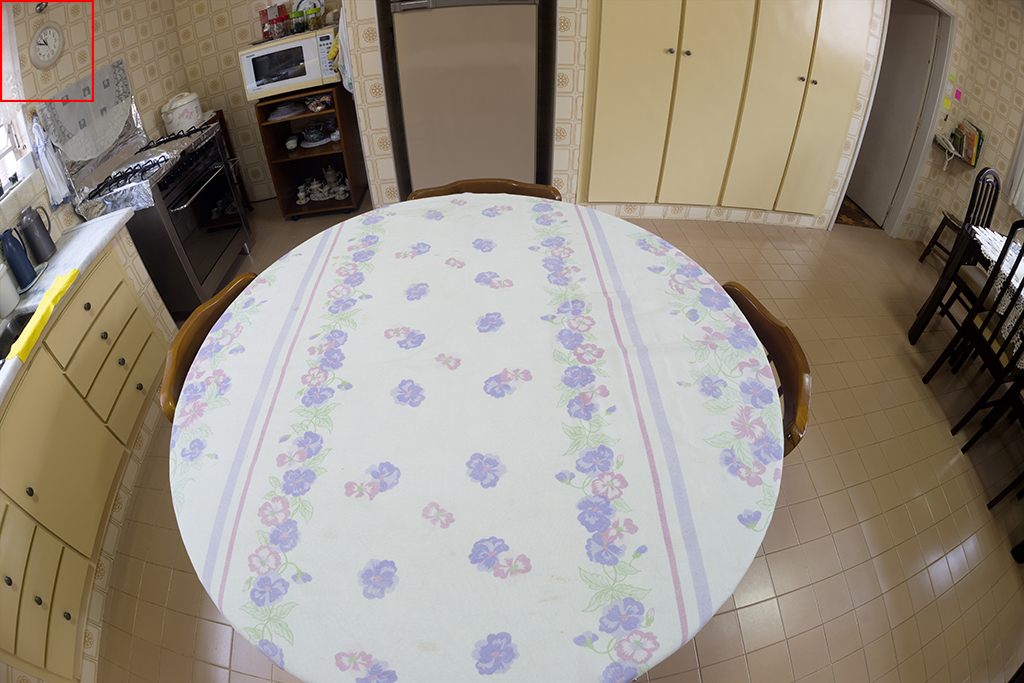
F2.8 - Upper left corner - 100% crop:
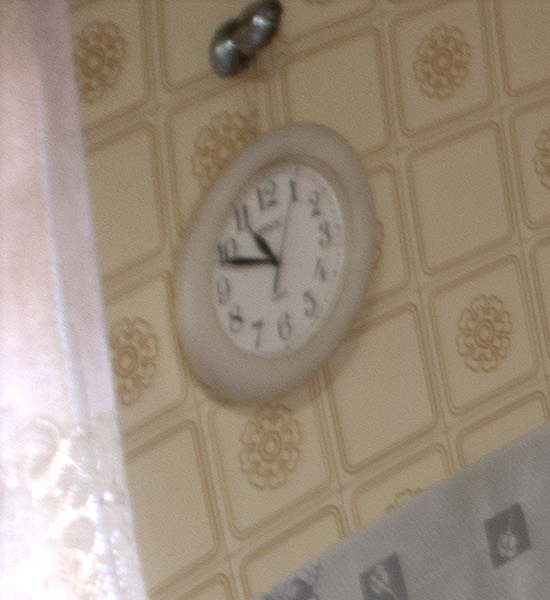
F5.6 - Upper left corner - 100% crop:
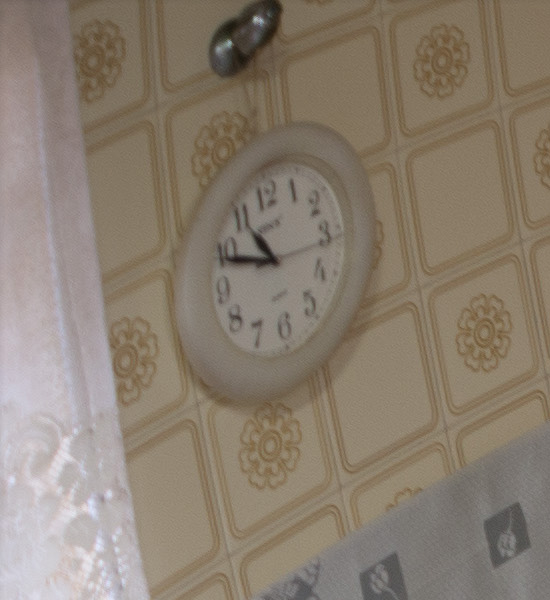
F11 - Upper left corner - 100% crop:
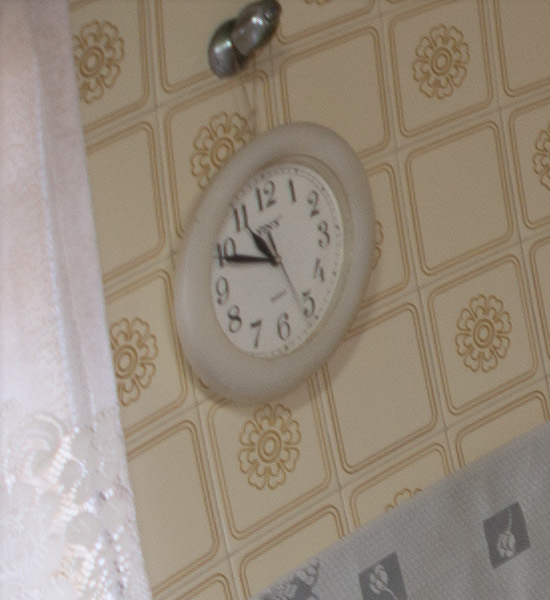
F11 - Upper left corner - 100% crop - without CA correction:
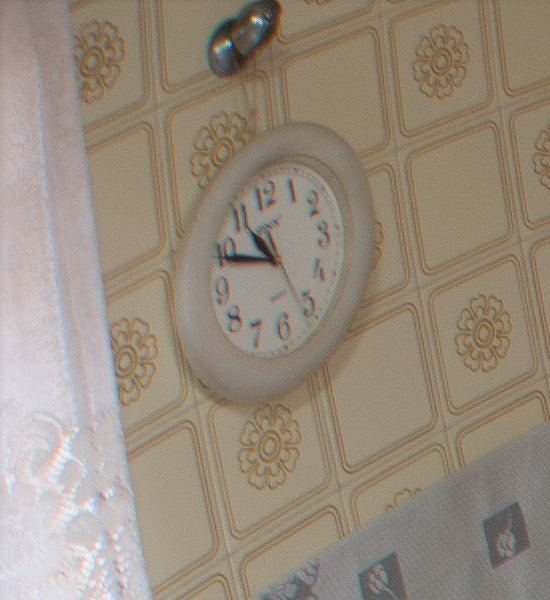
| memetph wrote: |
I don't think that distortion . aberrations, vignette and all thiese problems caused by the lens have no influence on the sharpness performance of a lens.
Pragmaticly, I could see that lenses which have those problems produce a weaker sharpness on the edges and the corners. |
It is generally considered that there are 7 aberrations:
1. Spherical
2. Coma
3. Astigmatism
4. Field curvature
5. Longitudinal chromatic
6. Lateral chromatic
7. Distortion
All aberrations, except distortion, have a direct impact on sharpness. Vignetting simply is not an aberration.
_________________
If raindrops were perfect lenses, the rainbow did not exist. |
|
| Back to top |
|
 |
Gerald


Joined: 25 Mar 2014
Posts: 1196
Location: Brazil
|
 Posted: Sat Jul 12, 2014 1:31 am Post subject: Posted: Sat Jul 12, 2014 1:31 am Post subject: |
 |
|
Gerald wrote:
I would like to add some additional information on the performance of fisheye lenses in the corners. I think this information might be of interest to those who have or plan to purchase a fisheye lens.
In this article, Kurt Munger reviews the SAL-16F28 lens, which is the old Minolta 16mm F2.8 rebranded as a Sony:
http://kurtmunger.com/sony_16mm_f_2_8_fish_eyeid104.html
You'll find at the end of the article a number of crops showing the performance at the center and in the corners for the various apertures.
Another interesting review is the Zenitar 16mm F2.8 lens by Ken Rockwell:
http://www.kenrockwell.com/zenit/zenitar-16mm.htm
_________________
If raindrops were perfect lenses, the rainbow did not exist. |
|
| Back to top |
|
 |
|
|
|
You cannot post new topics in this forum
You cannot reply to topics in this forum
You cannot edit your posts in this forum
You cannot delete your posts in this forum
You cannot vote in polls in this forum
|
